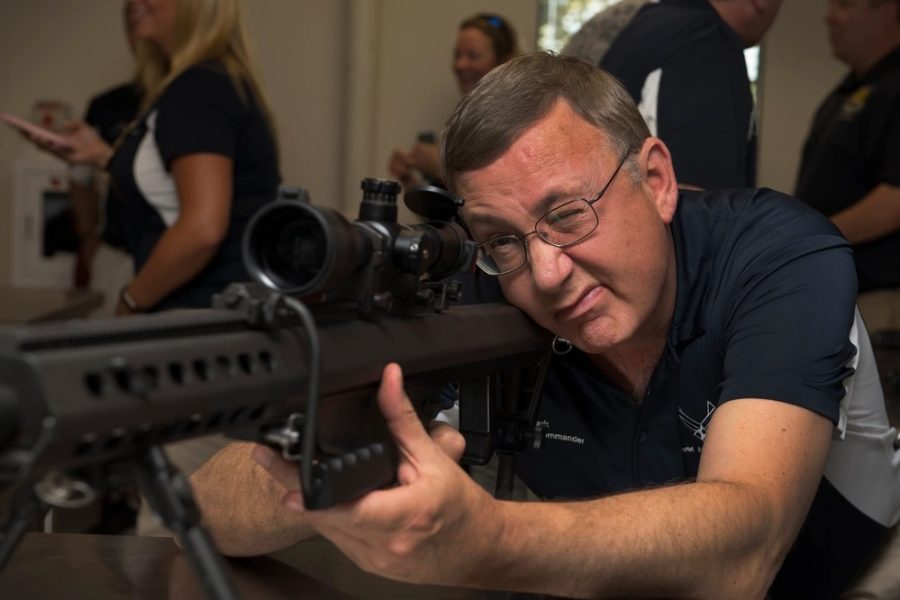The Department of the Air Force expects to add about 50 more recruits per year after lifting its maximum age limit for initial accession from 39 years old to 42 on Oct. 24, the latest in a long series of efforts to expand the talent pool in the midst of an ongoing recruiting shortage. The change applies to both officers and enlisted in both the Air Force and Space Force
“This opens the aperture to allow more Americans the opportunity to serve,” Leslie Brown, chief of public affairs for the Air Force Recruiting Service, told Air & Space Forces Magazine. “The accession age of 42 allows an Airman or Guardian to serve a full 20 years, since the retirement age is 62.”
The maximum age limit is 42 for the Navy and Coast Guard, 39 for the Army (with waivers authorized to age 45), and 28 for the Marine Corps, though the age limit is often higher for health care or ministry positions in the military. The U.S. Code of Federal Regulations mandates 17 and 42 as the minimum and maximum age for enlistment.
News of the change first appeared on the Facebook page Air Force amn/nco/snco, which posted an image of a notice about it on Oct. 26. Though 50 recruits a year may not sound like much, every little bit counts at a time when the Air Force is working to stem an ongoing recruiting shortfall—the service missed its goals by about 10 percent in fiscal 2023, but some recruits who were turned away last year could now be brought back.
“AFRS recently discharged 12 members from the delayed entry program who “aged out” due to the processing timeline,” Brown said. “Recruiters will be contacting them and others who may have left processing due to age.”
The new age limit is the latest in a series of changes made by the Air Force over the last few years to usher in new members. Giving qualified applicants an option to retest if they test positive for marijuana use allowed about 165 Airmen to join in fiscal year 2023, while allowing small hand and neck tattoos brought in another 150. Updating the service’s body fat composition rules brought in another 700 recruits, and streamlining the process for trainees to become citizens upon graduating Basic Military Training brought in 200 new Airmen.
Financial incentives have also played a role: reinstating the enlisted college loan repayment convinced more than 200 Airmen to join since March, while $32 million of enlistment bonuses brought in more than 3,800 Airmen in fiscal 2023.
Still, officials say the most pressing challenge to recruitment is a lack of familiarity with military service among Americans. Propensity to join the U.S. military is at just 10 percent, while 52 percent of young Americans have never considered military service—a historic high, AFRS commander Brig. Gen. Christopher Amrhein told reporters in September.
“Their unfamiliarity with military service and what it really entails means they often rely on the stereotypes and misperceptions they see in TV, movies, or the internet,” he said.
The Air Force is pursuing several outreach initiatives to bring community members onto bases, reach possible recruits online, and form relationships with minority communities. But officials have also called on Airmen themselves to help spread a positive message about service.
“Why did you join the Air Force, and what do you do every day?” said Amrhein, reminding Airmen and Guardians that “you are an influencer just as much as you are a recruiter.”
